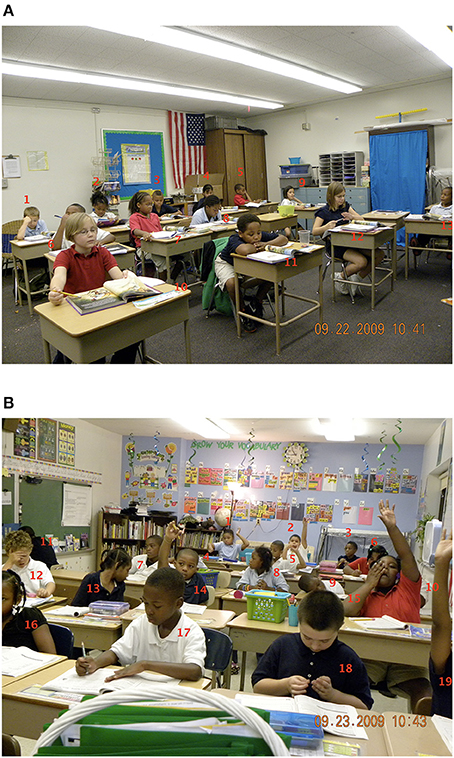Classroom practice, as a process, involves multiple agents and their interactions within the classroom as a system. The process can be manifested in diverse formats and structures, and its effectiveness can be influenced by numerous factors both internal and external to the classroom. Research on (mathematics) classroom practice can thus take different perspectives, and much remains to be examined and understood as we all try to improve mathematics teaching and learning through classroom practice.
- Argumentative Researchmr. Becker's Classroom
- Argumentative Researchmr. Becker's Classroom Activities
- Argumentative Researchmr. Becker's Classroom Assessment
- Argumentative Researchmr. Becker's Classrooms
- Classroom ethnography refers to the application of ethnographic and sociolinguistic or discourse analytic research methods to the study of behavior, activities, interaction, and discourse in formal and semi-formal educational settings such as school classrooms, adult education programs, and day-care centers.
- Becker's Classroom! This is where you'll come to find information that you need about the class, events that happen in Grades 7-12, and see evidence of what we have done!

Although it has long been recognized that research on classroom practice is important, large-scale systematic research on classroom practice in school mathematics is a relatively new endeavour. In fact, this Topic Study Group is only the second time in the ICME history to take a primary focus on classroom practice. As the quality of classroom instruction is a key to students’ mathematics learning, this Topic Study Group focuses on finding ways for understanding, assessing, and improving the quality of classroom practice.

The entire organizing team worked together before the congress in planning and organizing TSG 21. The TSG 21 was well attended in all four 90-min sessions, which indicates strong interest in this topic by congress delegates. This report provides an overview of the aim and focus of TSG21 and a summary of the discussion that occurred throughout the sessions.
Developed by psychotherapist Carl Rogers and adapted to rhetoric by writing scholars Young, Becker, and Pike, the speaker seeks compromise, acknowledging positive aspects of each party’s argument to arrive at a mutually-beneficial solution to an issue. General Criteria for Workshop and Evaluation (Becker) We will use two sets of criteria to workshop and evaluate each of the essays you write for this class. The set of definitive criteria will be unique to each essay, setting the guidelines for such things as page length, line space, purpose, audience, number and type of sources you will use. 801-794-2226 ext. One of my favorite quotes is “Never, give up. Never surrender!” from Tim Allen in the Start Trek parody Galaxy Quest.
Overview
Included here is a summary of three different models of argument. These models provide possible ways to organize an effective argument, which I hope will be helpful to your organization of your own argument. This information is summarized from the following source: Georgia State University, Department of English. (2008). First Arguments: A Peer Approach to Persuasion. Plymouth, Michigan: Hayden McNeil.
The Classical Approach
The classical approach to argument is a model of argumentation invented by the famous Greek philosopher Aristotle. It is best used when the purpose of your argument is to persuade your audience to agree with your point of view, take your side on an issue, or make a decision in your favor. The classical approach/Aristotelian model relies heavily on the use of ethos, pathos, and logos appeals.The following is the typical organization pattern for this approach:
- Introduction
- State your case–Clarify your issue. Give any necessary background for understanding the issues. Define any important terms of conditions here.
- Propostion–State your central proposition or thesis. Present the subtopics or supportive points to forecast your argument for your reader.
- Refutation–Analyze the opposition’s argument and summarize it; refute or address the points; point out faulty reasoning and inappropriate appeals.
- Substantiation and Proof–Develop your own case. Use ethos, pathos, and logos appeals to make your case. Use good evidence such as examples.
- Conclusion
The Toulmin Approach
This model of argument was developed by the British philosopher Stephen Toulmin. The Toulmin Model is especially helpful when you try to make a case on controversial issues that do not have an absolute truth as the Toulmin Model seeks to establish probabilities rather than truth.The following is a typical organization for the Toulmin Model:

- Claims–There’re several different types of claims: claims of fact, claims of definition, claims of cause, claims of value, and claims of policy. You can use any one or more of these claims to introduce your issue and to establish your case.
- Data–Information you use to support your claims.
- Warrant–The assumption made by a writer in order for the claim to be true.
- Backing–What you use to support the warrant.
- Rebuttal–This is where you consider the opposing viewpoint and refute it.
- Qualifer–Use language that seeks to qualify the claims you make in order to bring your argument to a close.
The Rogerian Approach
This is a model of argument named after the psychologist Carl Rogers, who believed that people could only resolve an issue or solve a problem once they found the “common ground.” A group of rhetoricians, Young, Becker, and Pike, then developed a model of argument named the Rogerian argument, which advocates a way of argument that is less confrontational, less one-sided, and more compromising and deliberately consensus-building. The following are the usual elements of the Rogerian approach:

Argumentative Researchmr. Becker's Classroom
- An introduction that briefly and objectively defines the issue or problem
- A neutral, non-judgmental statement of the opponent’s position, presented within valid contexts, that demonstrates the writer clearly understands it
- A neutral statement and explanation of your position and the contexts in which it is valid
- An analysis of what the two positions have in common and what goals and values they share
- A proposal for resolving the issue in a way that recognizes the itnerests of both parties, or a statement of how the opponent’s position would benefit if he were to adopt elements of the writer’s position
Argumentative Researchmr. Becker's Classroom Activities
Your Approach
Argumentative Researchmr. Becker's Classroom Assessment

Argumentative Researchmr. Becker's Classrooms
The above approaches provide proven organizational tools you could use for your argument. What approach you use, however, doesn’t necessarily have to conform exactly to one of these approaches. In fact, it is quite common for people to combine some of the elements of these approaches based on the needs of their argument.